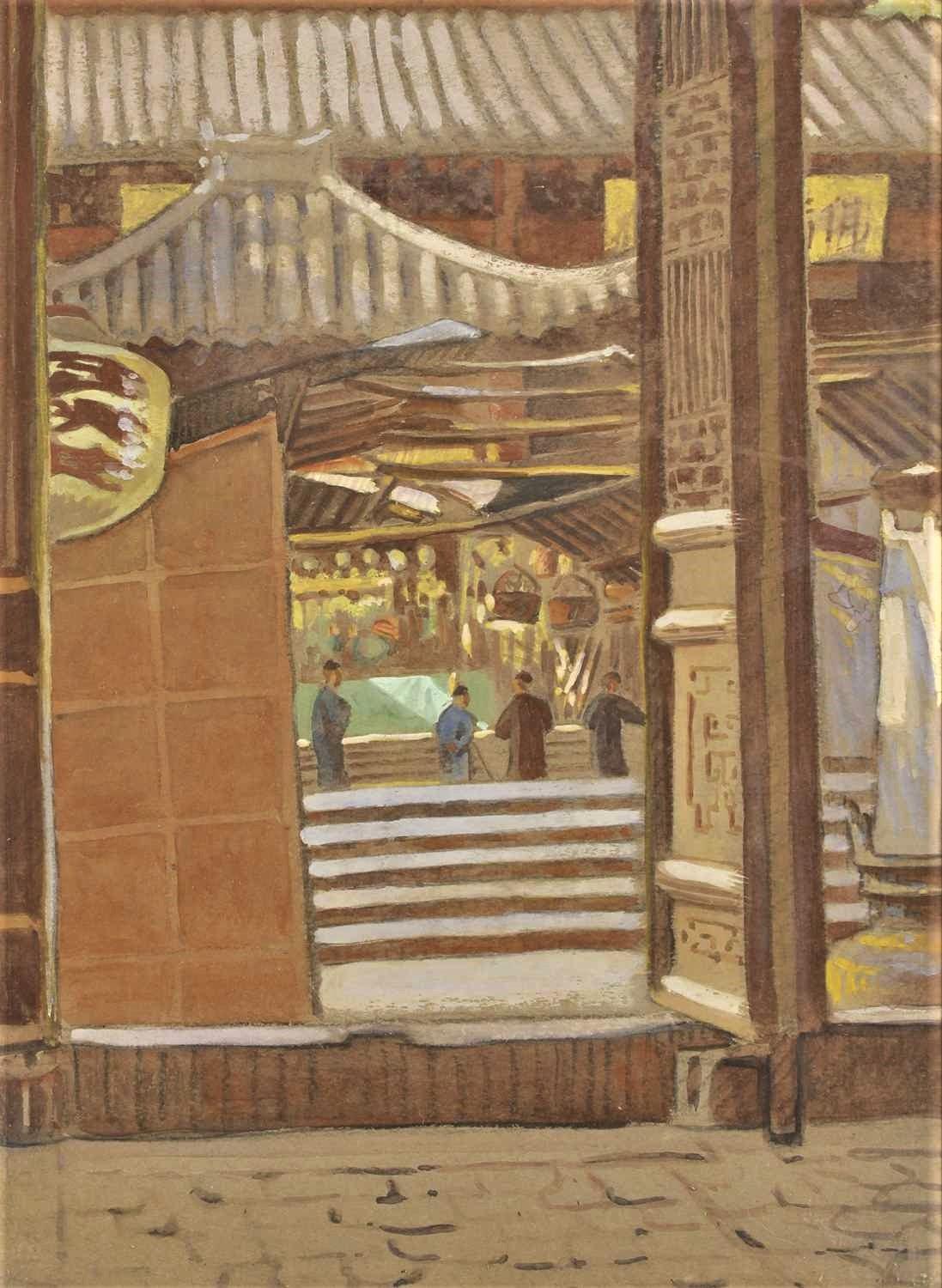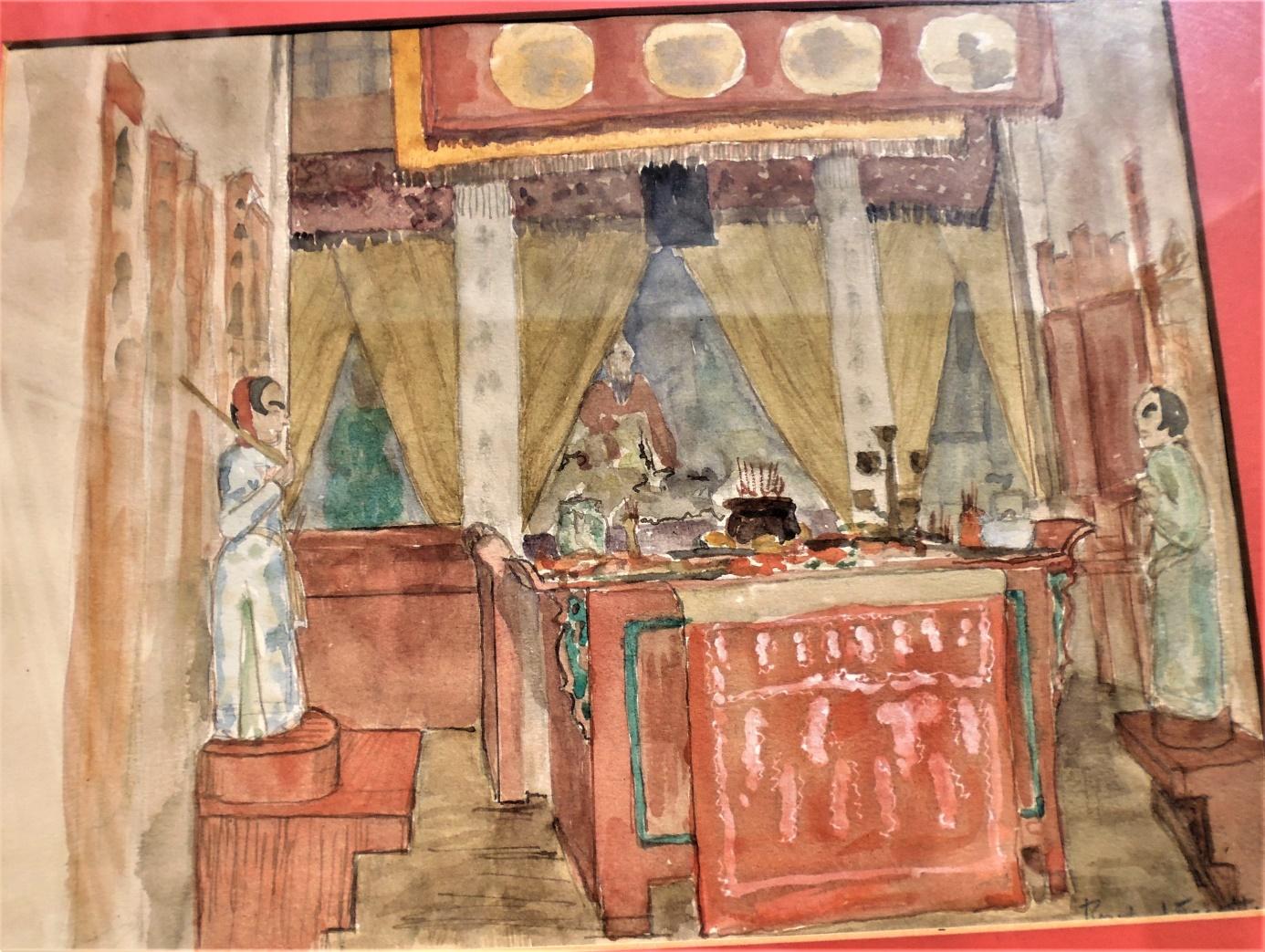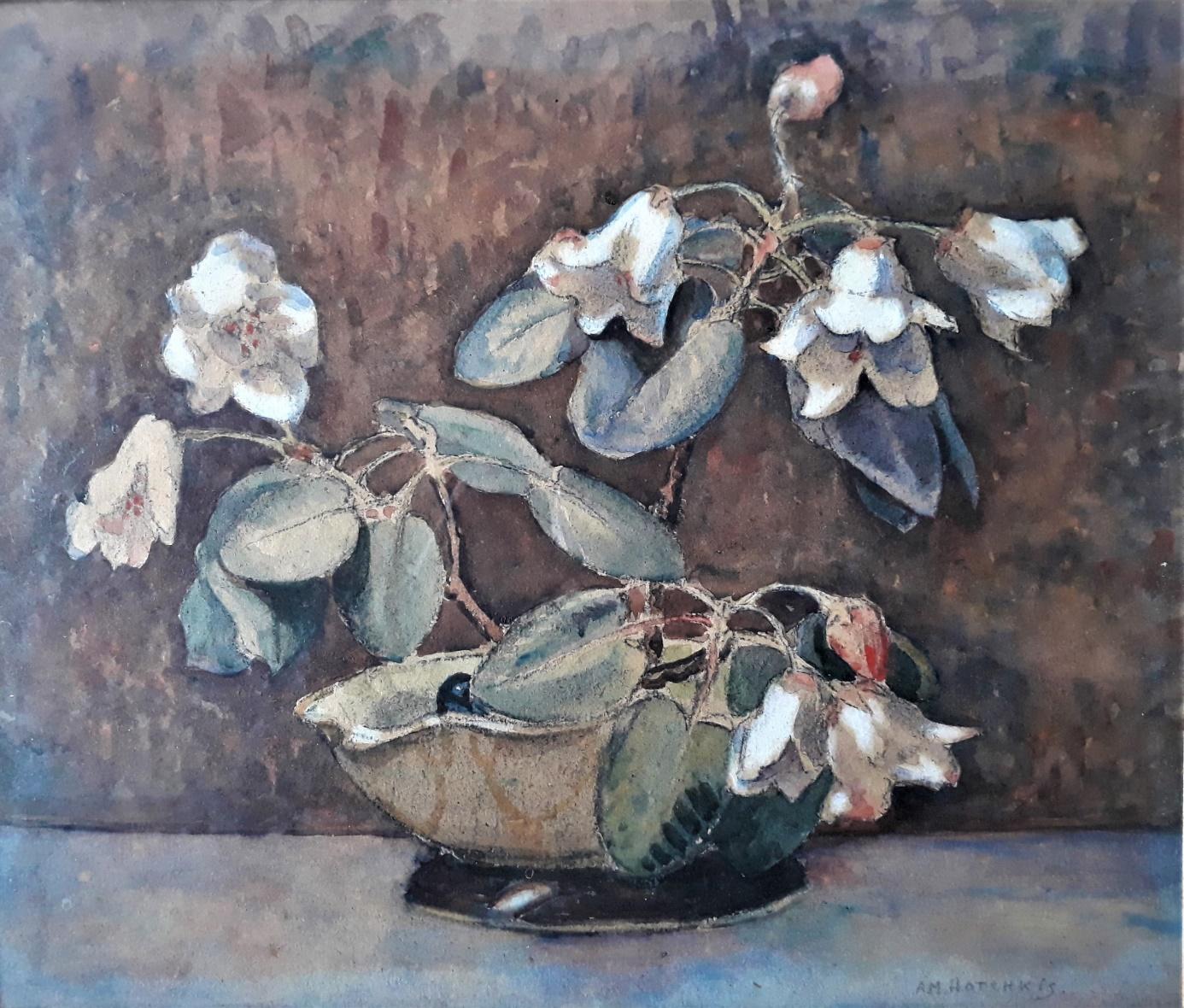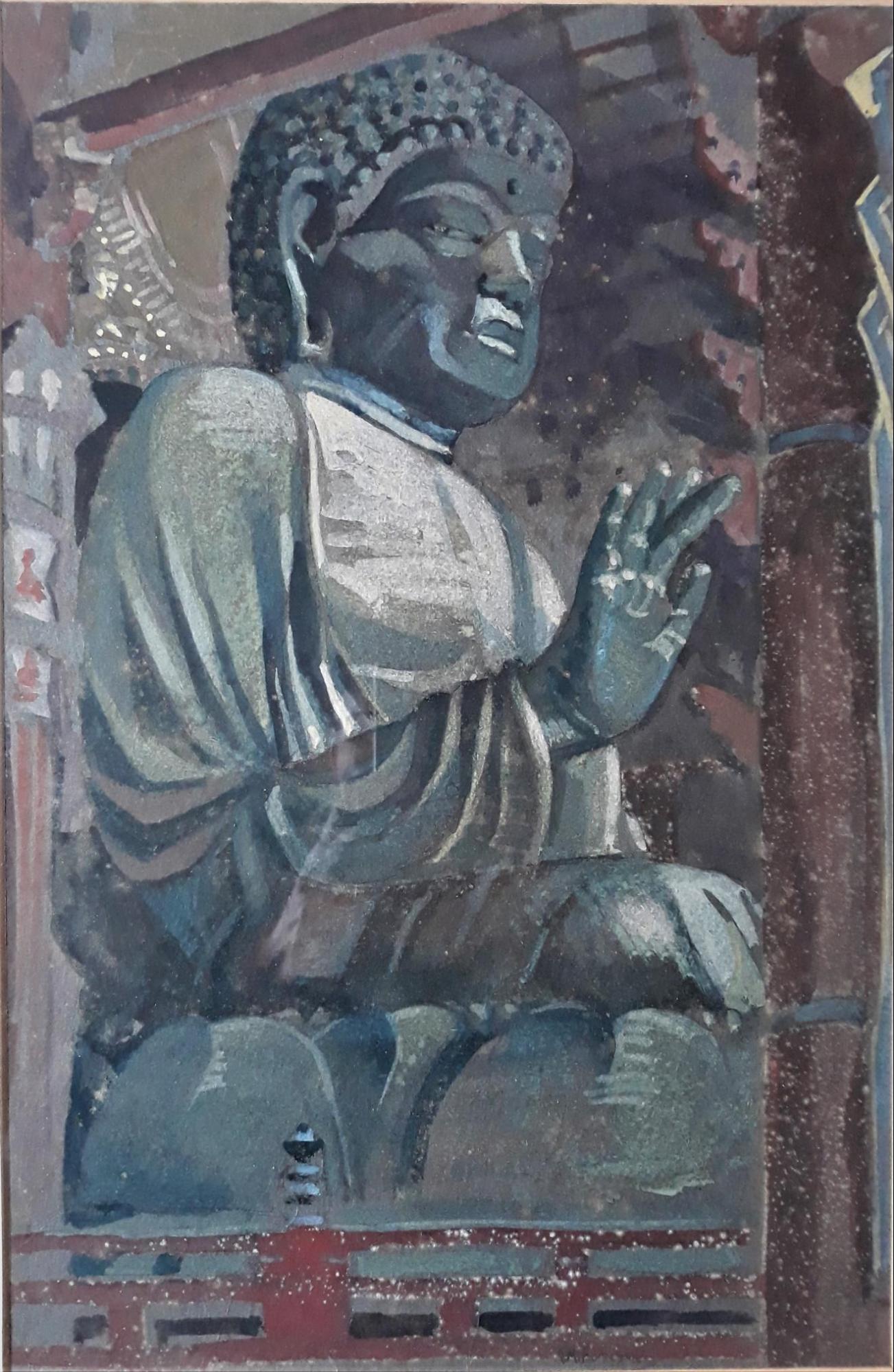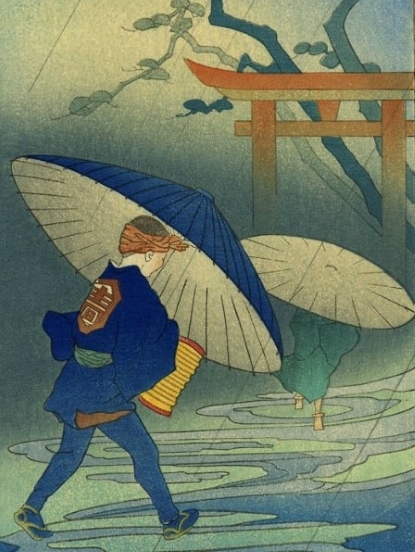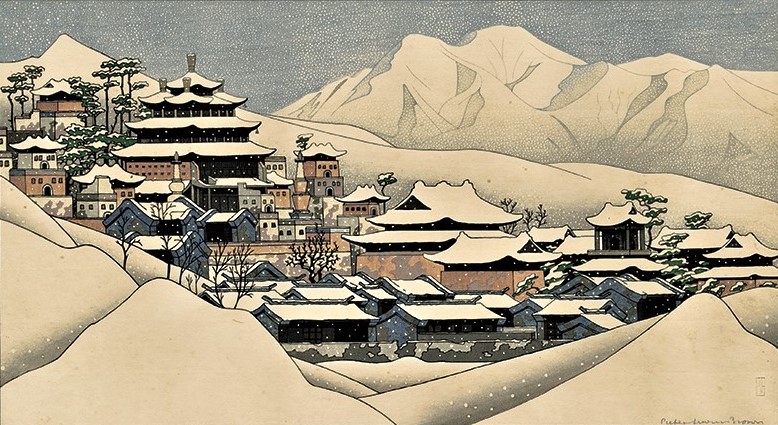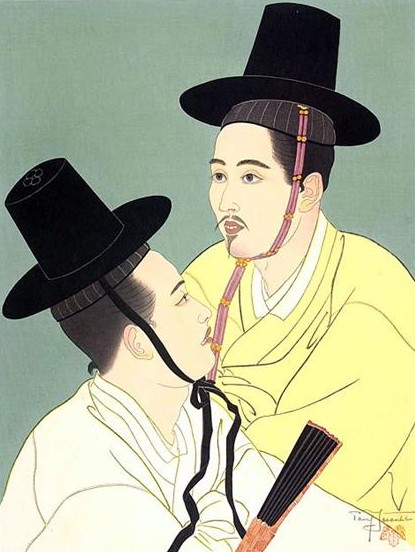ANNA MARY HOTCHKIS (1885-1984)
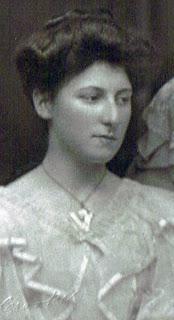
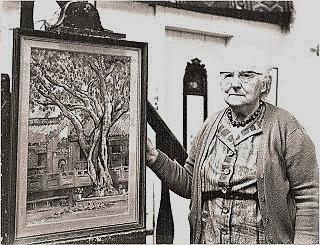
Anna Mary Hotchkis was Scottish like Elizabeth Keith and they both represented the vitality and originality of the Scottish school of painting at the beginning of the 20th century, school where the fairer sex was particularly well represented.
She was born in 1885 near Glasgow in a family of nine children whose the four sisters have remained very close (one of them, Isobel, was also a painter). His initial training took place at the Glasgow School of Arts then at the Edinburgh College of Arts under the direction of the painter Robert Burns (1869-1941) and later in Munich. She chose to live for ten years in the small village of Kirkcudbright, on the south-west coast of Scotland, already at the time the village of Scottish painters that it has been throughout the 20th century and to which she remained faithful until her death.
Her life took a turn in 1922 when she decided to visit her sister Catherine who had chosen to be a teacher for the YWCA in Manchuria, in Mukden (now Shenyang). Already showing an attraction for travel, she did not hesitate, before joining her, to make long stops in the United States, Japan and Korea. From Mukden, she visited several Chinese regions including Shanghai and Beijing where she finally spent a year teaching art at the Christian-inspired University of Yenching, of which John Leighton Stuart (1876-1962) had just been appointed President (later, American ambassador in China from 1946 to 1949).
She returned to Scotland in 1924, after long stops in Moscow and Berlin, and in 1925 she organized her first exhibition in London, where appeared 70 paintings that she had brought back from her stay in China. Nostalgia brought her back to Beijing in 1926. She spent ten years there until the outbreak of war with Japan in 1937, a period interspersed with several round trips to the United Kingdom to maintain recognition of her art.
During her first stay in Beijing in 1924, she had met an American artist, Mary Mullikin, and discovering many affinities, they both maintained a faithful friendship (see the chapter on Mary Augusta Mullikin on this site) reinforced by a common desire to travel through China. It should be emphasized that China during this period (1927-1937) was plagued by repeated convulsions between warlords or between the nationalist and communist parties, which combined with recurrent banditry, and the names Hotchkis and Mullikin have to be added to those of other intrepid women of this time like Léa Lafugie or Alexandra David-Néel : their trips were the source of their inspiration and the material for the paintings and writings they created with intelligence and sensitivity.
After a first trip to Korea and Japan in 1927, the two women went on two expeditions in 1931 to the north of Shanxi province to reach, near Datong, the famous Yungang caves, one of the most important Buddhist sites in China. From these trips was born the book Buddhist Sculptures at the Yun Kang Caves published in 1935 by the French publisher in Beijing, Henri Vetch. The latter, impressed by the works and paintings of the two artists, then encouraged them to continue in the same vein by visiting other sacred sites in China. Anna Hotchkis and Mary Mullikin thus went at the end of 1934 to Mount Taï (Taï Shan), the Mount of the East, the oldest place of Taoist devotions in the province of Shandong ; in the fall of 1935, they visited three other sites : in Shanxi, the Buddhist Mount of Wutai Shan and Mount Heng ; and much further west, in Shaanxi, Mount Hua. The following year, they completed these pilgrimages by visiting the Song Shan in Henan then the Heng Shan in Hunan and finally, in distant Sichuan, the prestigious Buddhist temples of Mount Emei (Emei Shan). In the months that followed, the two travelers began to write the story of their new discoveries, but the outbreak of the Sino-Japanese war did not allow them to have it published.
If Mary Mullikin decided to stay in Tianjin, Anna Hotchkis preferred to return to England. Once again she took the by-way, staying in Japan, Hong Kong, Ceylon, India, Iraq, Constantinople, Greece and Venice before returning to Scotland "plein d’usage et raison" to live in Kirkcudbright "le reste de son âge". She continued to paint but still escaped regularly for new trips to Europe and the United States. She even returned to Hong Kong in 1973 for the release, finally, of the book she had previously written with Mary Mullikin, The Nine Sacred Mountains of China, from the same publisher Vetch, 38 years after the journey they had made together.
Bibliography :
- Buddhist Sculptures at the Yun Kang caves, by Anna Hotchkis and Mary Mullikin, Henri Vetch, Pékin, 1935
- The Nine Sacred Mountains of China, by Anna Hotchkis and Mary Mullikin, Vetch & Lee, Hong Kong, 1973
The collection
